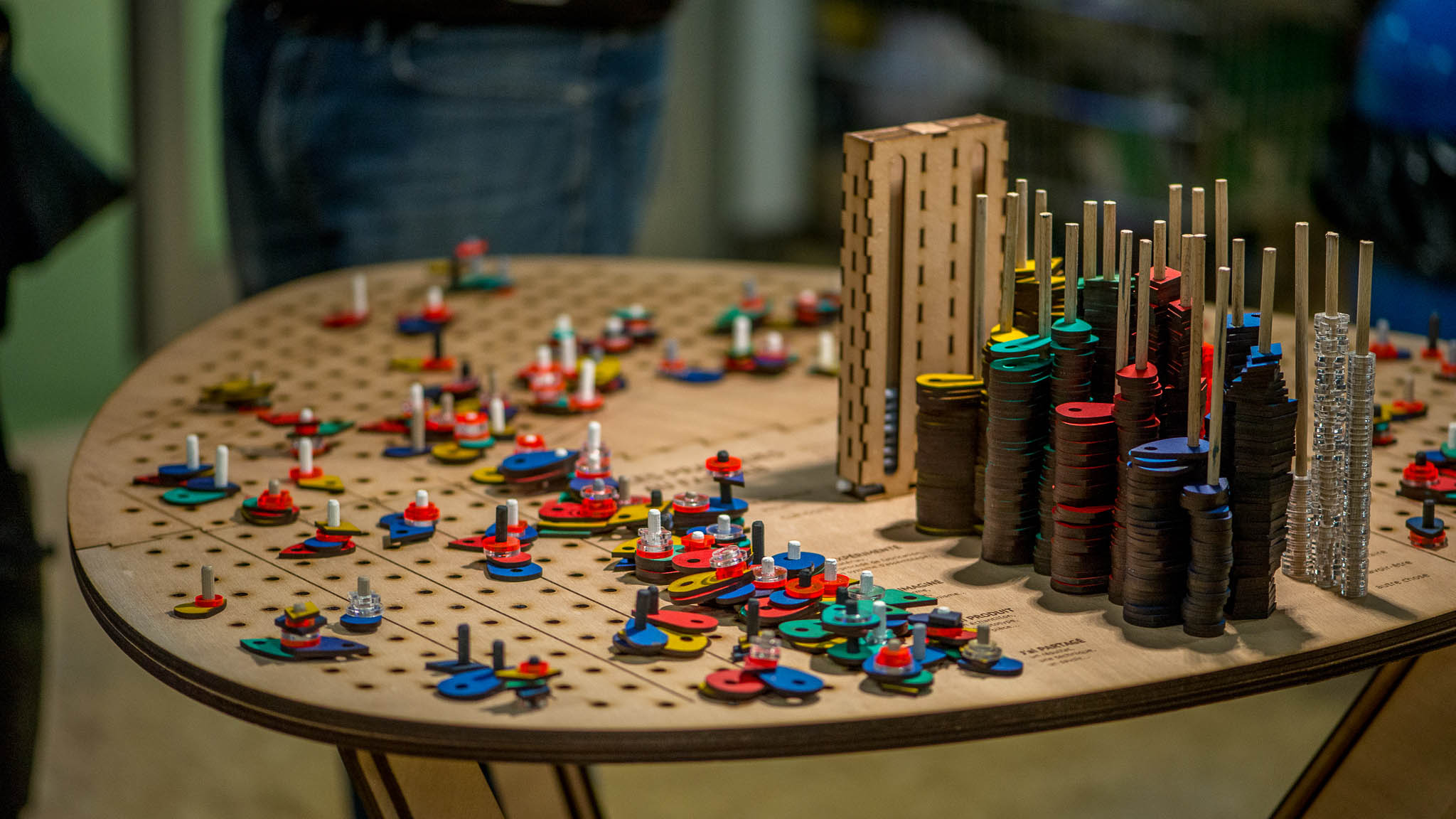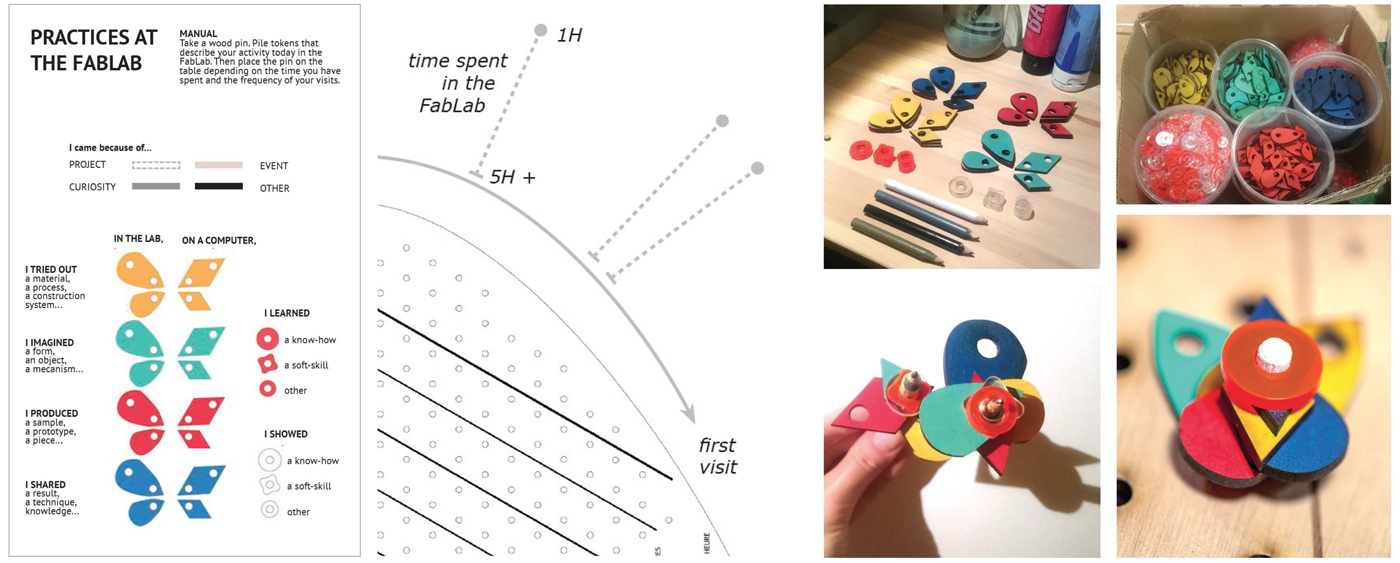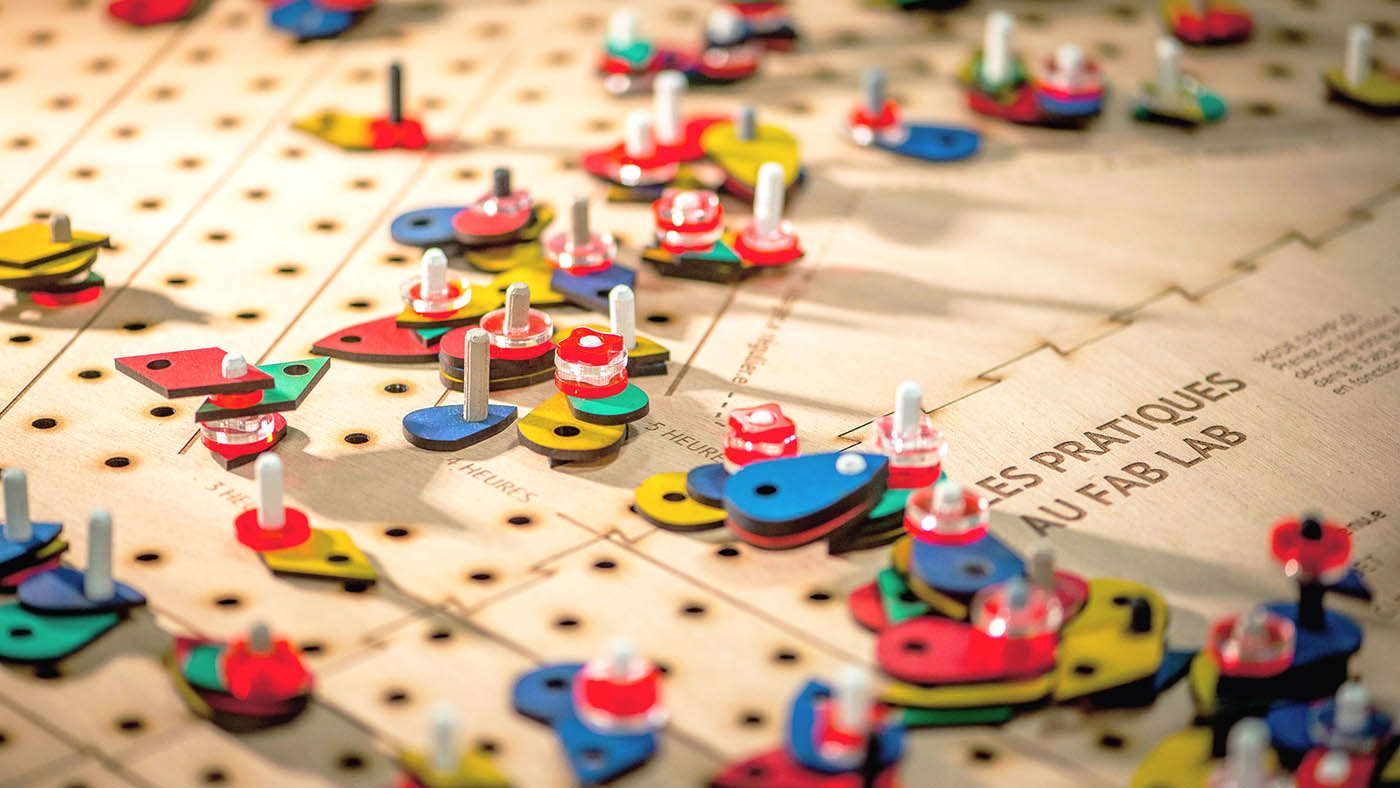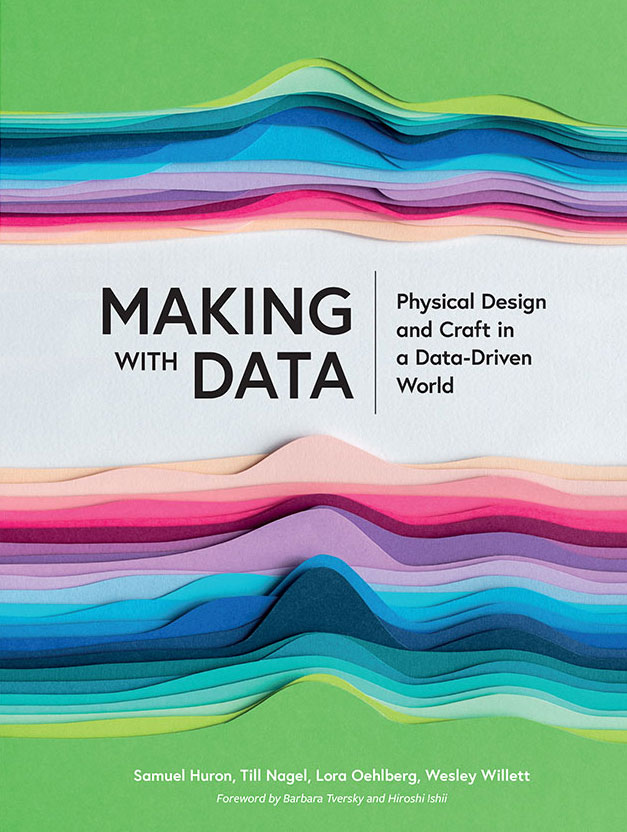CAIRN [kairn] noun. From Scottish Gaelic: càrn (plural càirn). A human-made pile or stack of stones. In modern times, cairns are often erected as landmarks.
Inspiration
Created together with the managers and makers at a Fablab located inside a famous Parisian museum, Cairn addresses assumptions about making practices and activities in third spaces. Unsatisfied with traditional surveys and evaluation tools, we looked for ways to create a survey apparatus that could be accessible both to visitors and regular Fablab members. Taking inspiration from many different sources, from ancient traditions to contemporary construction systems, we created a table which invites people to play with and assemble tokens to learn from their experience in the space. The installation uses aesthetic properties, such as touch, shape, color and layout to engage visitors in data collection processes and trigger a participatory inquiry. The shape of the table itself encouraged people to gather around it to form an “assembly” and discuss about the data displayed on the table-top.

Process
Two main design principles guided the design of Cairn. First, we wanted to have both unitary and aggregated views on people’s practices in the space. We wanted Cairn to reflect individual responses, as well as to gain an overview of all the responses. Therefore, we chose a subtractive system: people would take tokens from dispensers and assemble them to form individual sculptures. As they emptied, the dispensers could be read as inverted bar charts, while the little sculptures represented individual experiences. Second, we wanted people to gather and discuss over the data collected and visualized on the table top, so they could enter in a collective inquiry about what the data meant. To enhance these gatherings, we opted for a round shaped table.

Tools and Materials
- InkScape
- Laser Cutter
- 3mm Wood Panel, painted (tokens & dispenser)
- 6mm Wood Panel (table)
- 3mm Acrylic (two colors)
- ø 6mm Wood Pins
- 3D printed brackets
Reflections

We were particularly fascinated by Cairn’s ability to trigger discussions in the Fablab among people from diverse backgrounds. These discussions concerned both people’s introspective experience when interacting with Cairn as well as broader questions about the Fablab community. The verbal code that we inscribed on the table top to categorize and qualify people’s activities was subject to redefinitions and interesting questions at the core of the space ethos emerged. (“What is learning?”, “Can I say that talking to you is sharing in a FabLab context?”, “What is a soft-skill?”).
Over five months in the FabLab we observed the development of unexpected uses: it became a tool for the fabmanagers to present the Fablab, a discussion spot, an incentive for newcomers to get started, etc. We also gained insights into the table’s use as a methodological tool to conduct qualitative interviews and as an experience sampling tool that encourages people to reflect on their experience and verbalize it with nuances. One of the most interesting and unexpected outcome is that Cairn became a symbol, an iconic production of the Fablab. Today, pictures of Cairn are displayed on computer screens and it is presented as a major piece produced in the space.
We believe this work opens a new research agenda in terms of methods and tools to be designed for pluridisciplinary work at the crossroads of visualization, HCI, design, psychology and the social sciences.
About the Designers
Pauline Gourlet, Ph.D., splits her time between New York and Paris, working as a designer, researcher, and teacher. She is also the co-founder of l’Atelier des chercheurs. Currently, she works at the United Nations (Department of Political Affairs) as Innovation & Data Specialist. www.paulinegourlet.com.
With a background in engineering, Thierry Dassé worked as a maths teacher and scientific facilitator. Today, he is a Fabmanager at the Cité des sciences et de l’industrie in Paris. He is fascinated by technical systems, from ancient techniques to digital technologies and develops numerous projects bridging fabrication, science and art.

